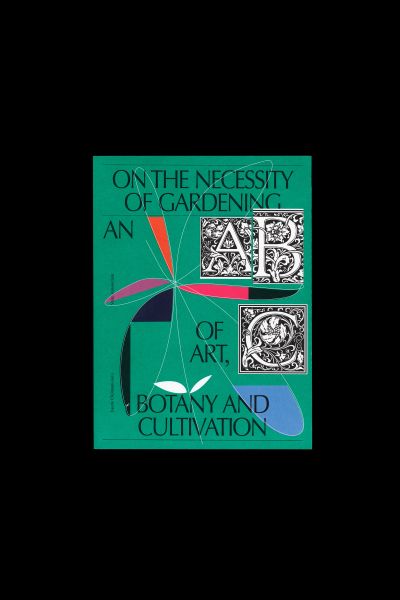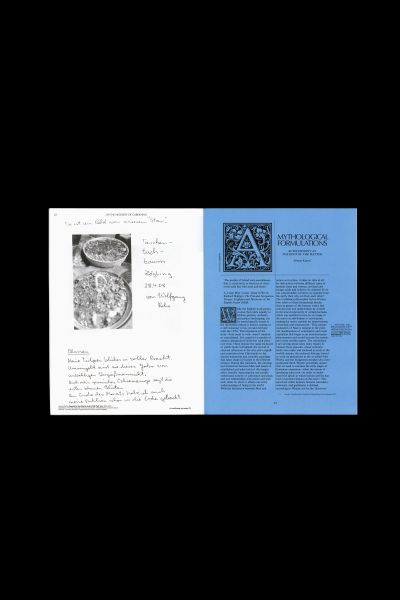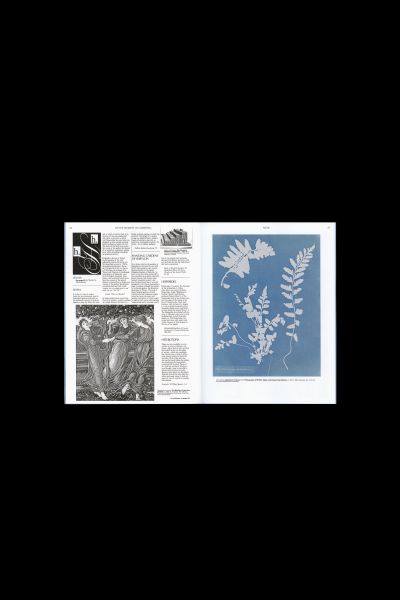Laurie Cluitmans
On the Necessity of Gardening
An ABC of Art, Botany and Cultivation
- Kategorie
- Goldene Letter
Begründung der Jury
★★★★★
The Netherlands /// Niederlande
★★★★★
Organized as an abecedarium, “The Necessity of Gardening” tells the story of the garden as a rich source of inspiration. Garden History, garden politics, the garden as an abiding metaphor for society and culture are transported in essays, photographs, illustrations, from A – Z. The extensive collection of illustrations and texts looks at the garden from a new perspective.
In medieval art, the garden was a reflection of paradise, a place of harmony and fertility, shielded from worldly problems. In the eighteenth century this image tilted: the garden became a symbol of worldly powers and politics. The Anthropocene is forcing us to radically rethink the role we have given nature in recent decades. By now there is a renewed interest in the theme of the garden among contemporary makers. It is not a romantic desire that drives them, but rather a call for a new awareness of our relationship with the earth, by connecting different fields of activity in landscape, art, and culture. Gardening is designing nature, organizing the wild – bringing structure to chaos. The design of this contemporary garden-encyclopedia reflects that in an extraordinary, superb way. The layout of the text boxes is reminiscent of well-organised, well-maintained and productive plant beds.
This book is full of energy. The viewer dives in, every page is different, but you never get lost, even if it seems you could. Thousands of things to discover (even a trampoline seems to belong to the garden nowadays), to read, to enjoy. One continues to stroll around. Virtuous typesetting, organized chaos, a super characteristic cover, great printing, binding, finishing – just a few Jury comments that explain the fascination for this work and the award of the Goldene Letter.
★★★★★
Als Abecedarium strukturiert, erzählt „On the Necessity of Gardening“ die Geschichte des Gartens als Quelle der Inspiration, widmet sich Gartenhistorie, Politik des Gärtnerns oder dem Garten als Metapher für Gesellschaft und Kultur. Dies geschieht in Form von Essays, Fotografien, Illustrationen, von A-Z. Die umfangreiche Sammlung aus Abbildungen und Texten betrachtet den Garten aus einer neuen Perspektive.
In der mittelalterlichen Kunst war der Garten ein Abbild des Paradieses, ein Ort der Harmonie und Fruchtbarkeit, abgeschirmt von weltlichen Problemen. Im achtzehnten Jahrhundert kippte dieses Bild: Der Garten wurde Symbol für weltliche Mächte und die Politik. Das Anthropozän zwingt uns zu einem radikalen Umdenken, was die Rolle, die wir der Natur in den letzten Jahrzehnten zugedacht haben, betrifft. Inzwischen gibt es ein neues Interesse am Thema Garten in der zeitgenössischen Kunst. Es handelt sich hierbei um keine romantische Sehnsucht, sondern vielmehr um einen Aufruf zu einem neuen Bewusstsein für unsere Beziehung zur Umwelt, die in verschiedene Bereiche wie Landschaft, Kunst und Kultur hineinreicht. Gärtnern bedeutet, die Natur zu gestalten, der Wildnis Struktur zu geben. Die Gestaltung dieser zeitgenössischen Garten-Enzyklopädie spiegelt dies auf außergewöhnliche Weise wider. Die Anordnung der Textkästen erinnert an gut gepflegte ertragreiche Beete.
Das Buch sprüht vor Energie. Der Betrachter taucht ein, jede Seite ist anders, doch man verirrt sich nie, auch wenn es scheint, dass man es könnte. Es gibt tausende Dinge zu entdecken, zu lesen, zu erfahren. Man schlendert darin umher. Virtuoser Satz, geordnetes Chaos, ein extrem charakteristisches Cover, toller Druck, Bindung, Verarbeitung – nur einige Kommentare, die die Faszination für dieses Werk und die Verleihung der Goldenen Letter erklären.



